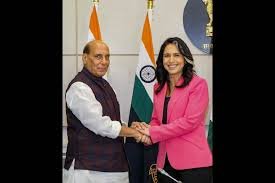The Chief of the Defence Research and Development Organisation (DRDO) has recently made statements that reflect a fundamental shift in India’s approach to building jet engines for military aircraft. The admission that “the only way” forward is through co-development with international Original Equipment Manufacturers (OEMs) is a watershed moment in India’s aerospace ambitions.
India has experienced significant problems in building indigenous jet engines, especially for fighter aircraft. The DRDO’s Kaveri engine project, designed for the Tejas light combat aircraft, has battled with performance concerns, producing just 72kN of thrust instead of the necessary 82-90kN. This disparity has forced reliance on foreign engines for operating capability.
The DRDO’s new approach emphasises the importance of collaborating with major international OEMs to exploit their technological knowledge. This strategy is especially important as India starts on ambitious programs such as the Advanced Medium Combat Aircraft (AMCA), which intends to include advanced capabilities such as supercruise and stealth technology.
India is presently investigating agreements with various international OEMs, including General Electric (GE) of the United States, Safran of France, and Rolls-Royce of the United Kingdom. Each of these organisations has distinct technological advantages that might help India’s engine development skills.
The AMCA MK-1 will initially use GE’s F414 engine, with future versions aimed at developing an indigenous engine in partnership with a foreign partner. This twofold strategy aims to guarantee that India not only satisfies current operating demands, but also develops long-term skills in engine design and manufacture.
The transition to co-development reflects an acknowledgement of the limits that Indian companies confront in establishing self-reliance in jet engine technology. By working with international OEMs,
Access modern technology and industrial techniques that are now out of India’s grasp.
Accelerate the development time for new engines, which is critical given the competitiveness of global military markets.
Finally, these alliances aim to promote a degree of strategic independence in defence manufacture, allowing India to fulfil its own security demands while also potentially exporting sophisticated military technology in the future.
The DRDO Chief’s admission demonstrates a pragmatic attitude to tackling the historical hurdles in indigenous jet engine development. By embracing co-development with international OEMs, India is positioned itself to considerably improve its aerospace capabilities while simultaneously aiming for increased self-sufficiency in military manufacture. This plan mirrors a larger trend in India’s military policy, which emphasises collaboration and technical progress as critical components of national security strategy.


